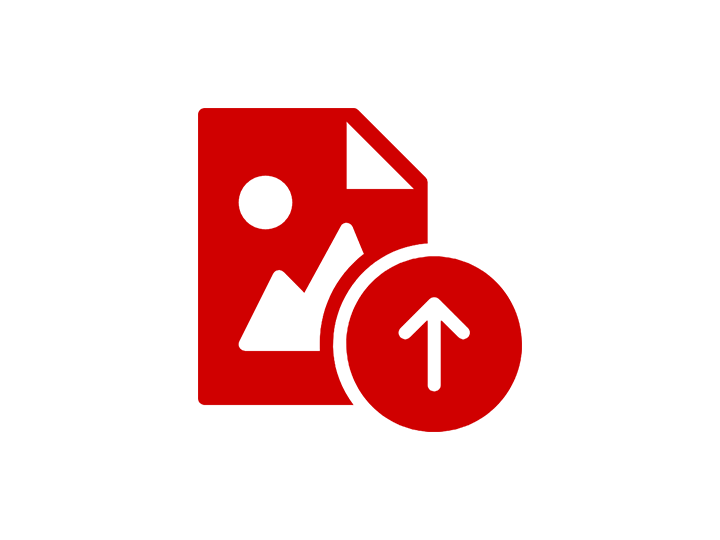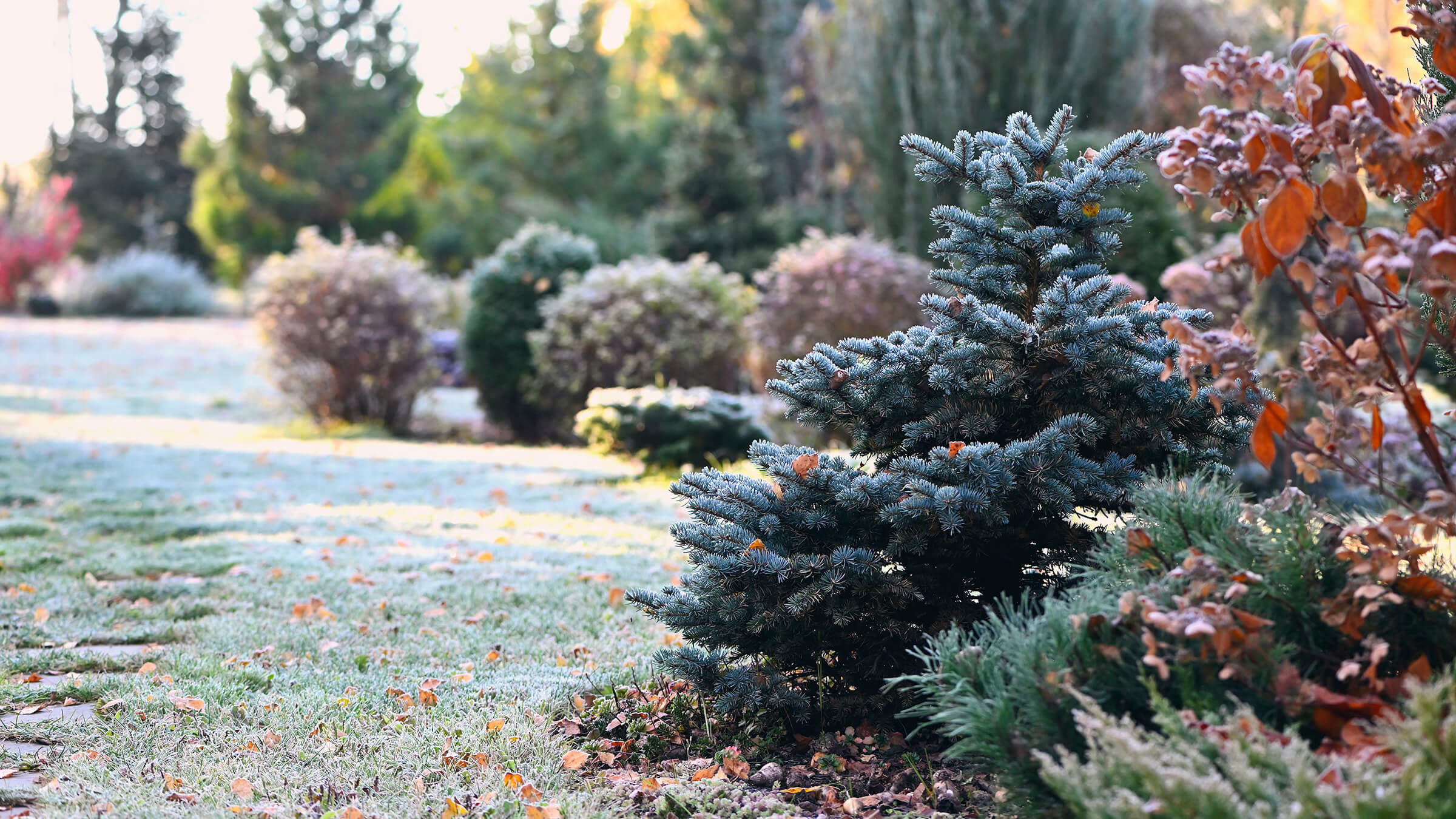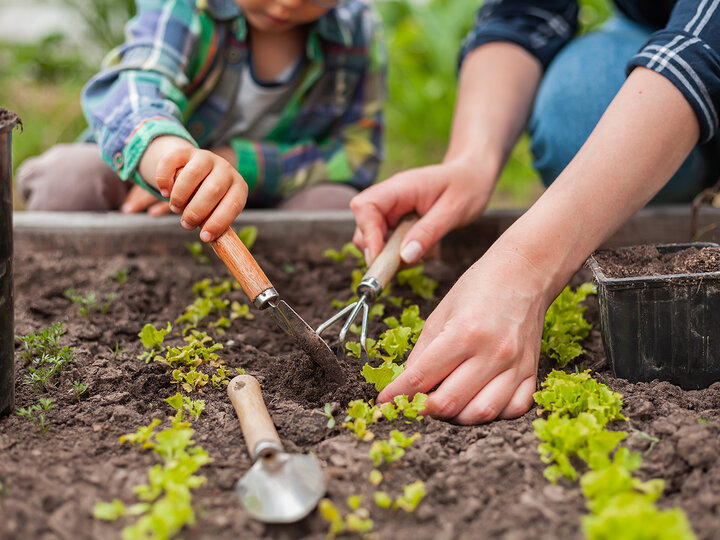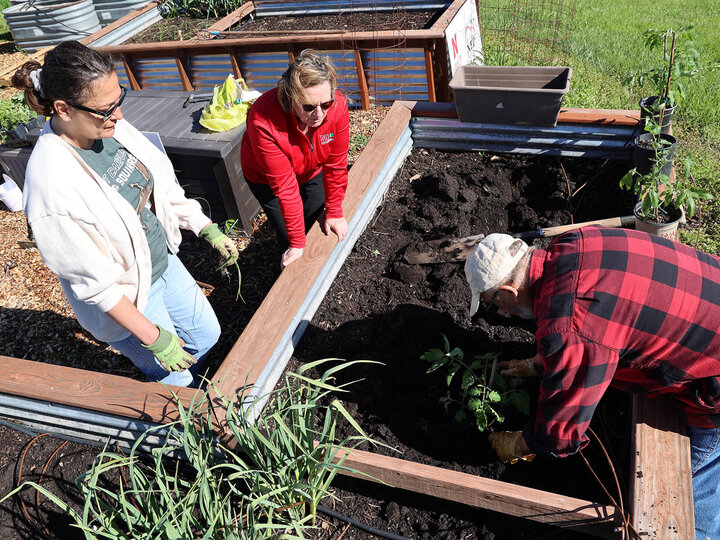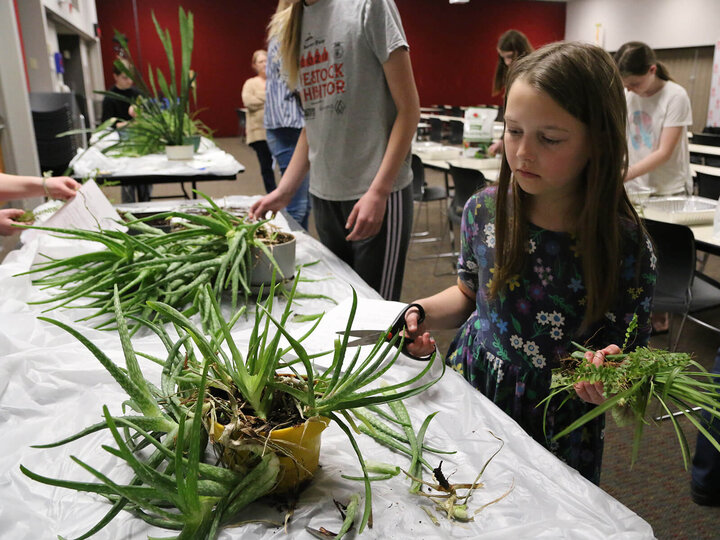Horticulture: Your Yard & Garden
Discover
Knowledge Base & Help Center
Do you have questions about your garden? Want to learn more about horticulture? Need advice on a specific plant topic?
Find information about:
Are Your Trees Ready for the Next Storm
Possible Causes of Sudden Wilt & Death in Tomatoes
White Grubs
5 Tips to Make Your Landscape More Bird-Friendly
Bush Cherries - A Game Changer for the Home Orchard
Greenbrier - A Thorny Invader
Plants for Pollinators
and much more!
Search Local & National Extension Resources
December FAQs: Find Answers to Frequently Asked Questions
Some de-icing products harm the lawn, what can be used on icy sidewalks?
Use sand for icy spots on the sidewalk to increase traction. Or use products such as calcium magnesium acetate (CMA), calcium chloride or magnesium chloride products, which are salt-free, and safe for use around pets and landscapes. For more information, visit Winter Protection for Sensitive Plants.
Can dormant seeding of a lawn be done in winter?
Yes, ideally dormant lawn seeding is done from mid-December through mid-February, after soil temperatures have dropped below 40° degrees F. Seeding should be done no later than March 15th.
Dormant seeding has several benefits. First, soil preparation can be done at your leisure during dry fall conditions. There’s no rush to get the work done in a short window of time in spring between frozen soil and wet soil. Dormant seeded turf grows well and fills in during cool spring weather, preventing much of the potential invasion by weeds. Finally, plants have more time to develop vigor and a good root system before hot summer conditions arrive, making them more able to tolerate summer stresses. For more information, visit Dormant Lawn Seeding.
Should wood mulch be placed around newly planted trees and shrubs?
Yes, 2-4 inches of mulch will hold winter moisture in the soil, minimize fluctuations in soil temperature and prevent damage from lawn mowers or other equipment. For more information, visit Much Ado About Mulch.
I know it's winter, but my landscape is so dry. Should I be watering now?
As winter drought conditions continue, watering on warm days is an important consideration. The priority for watering is young plants first - those planted in the last year and especially those planted this past fall; then evergreens, particularly those growing in exposed locations and near the south sides of buildings.
When watering, first check the soil to make sure it is not frozen. Use a screwdriver to probe the soil and determine 1) if and 2) how deeply the soil is frozen. Do not irrigate frozen soil, due to water waste and runoff. Air temperatures need to be above 40 degrees F.
Irrigation should take place early enough in the day for moisture to soak into soil to avoid ice forming over or around plants overnight. Water enough to moisten the soil about 6" deep. Stop irrigating if water begins to run off the landscape.
Be sure to use sprinklers and hoses, NOT your in-ground irrigation system, to prevent damage from future freezing temperatures.
Disconnect the hose from the plumping spigot once you are done watering. One or two irrigations during winter should suffice. If conditions remain warm and dry through winter and into spring, it will be critical to begin irrigation as soon as soils thaw this spring.
Determine current drought conditions in your area from the US Drought Monitor.
What are the hard black growths on the branches of my plum or cherry tree?
This is black knot, a fungal disease which affects primarily plum and cherry trees. Occasionally it can also be found on apricots, peaches and other plants in the Prunus genus, like chokecherry. Black knot is common throughout Nebraska in wild plum thickets. Pruning is the best method for eliminating black knot.
QUESTIONS
Do you have a lawn, garden or landscape question that is not answered above? Get research-based answers from our experts. Questions will be answered within 2 business days.
Call
MASTER GARDENER HELPLINE
Monday through Friday, 9 a.m. to 12 p.m.
Ask for a Master Gardener, if they are not in the office, please be sure to leave a detailed message.

MESSAGE US
Email us anytime!
Send a detailed email with your question or concern and we will respond as soon as we are able.

Stop In or Leave a Sample
Monday through Friday, 8 a.m. to 4:30 p.m.
Nebraska Extension in Lancaster County, 444 Cherrycreek Rd, Suite A, Lincoln, NE 68528
Stop in for a face-to-face consult or to leave a sample. Call ahead at 402-441-7180 to confirm availability.

Digital Diagnostic Network
UPLOAD YOUR IMAGE
Digital images may be submitted to http://digitaldiagnostics.unl.edu for help from Nebraska Extension horticulture experts.
They will review and respond to your question as soon as they are able.
